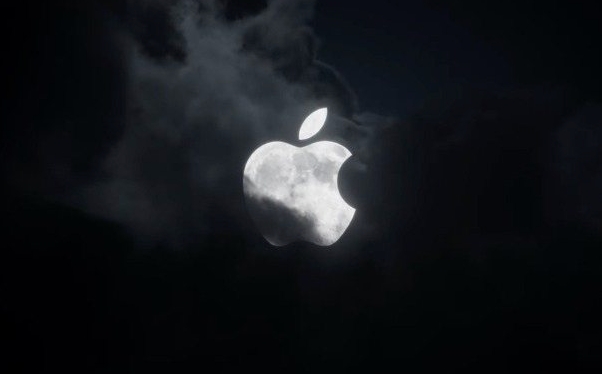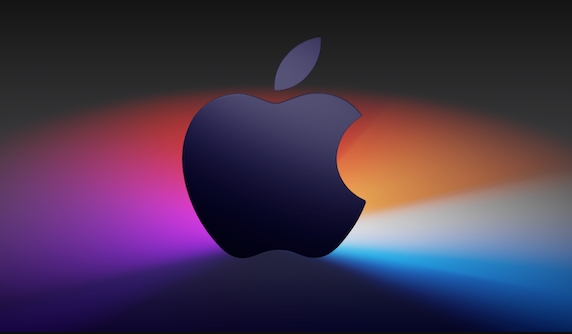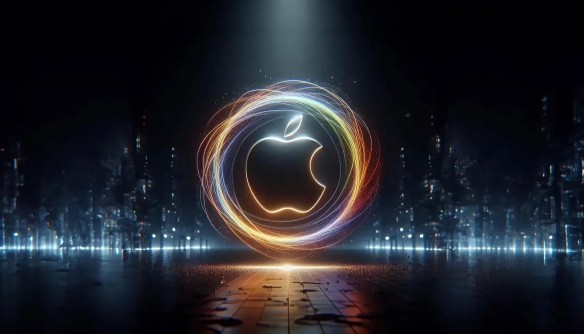How to connect two monitors to a MacBook
Jul 01, 2025 am 12:07 AMTo connect two monitors to a MacBook, first identify your MacBook’s ports and use appropriate cables or a dock. Modern MacBooks typically have Thunderbolt/USB-C ports; older models may include HDMI. Use two separate cables (like USB-C to HDMI or USB-C to DisplayPort) or a docking station for multiple connections. Ensure cables support DisplayPort Alt Mode and match resolution and refresh rate needs. If supported, daisy-chaining via Thunderbolt connects two monitors through one port. After connecting, configure displays in macOS under System Settings > Displays by arranging layout, setting resolutions, and choosing the main display. Be mindful that dual monitors drain battery faster.

Connecting two monitors to a MacBook is totally doable, and it can really boost your productivity or make for a better gaming or creative setup. The key is knowing what kind of ports your MacBook has and matching them with the right cables or adapters.

Check Your MacBook’s Ports First
Before buying any extra gear, look at what kind of ports your MacBook has — this will determine how many monitors you can connect and what kind of accessories you’ll need.

Most modern MacBooks (like M1 or M2 models) come with Thunderbolt/USB-C ports. Some older Intel-based models might have USB-C plus an HDMI port, or even Thunderbolt 3. Here's what to know:
- Thunderbolt 3 and USB-C ports look the same but can do different things.
- You can use Thunderbolt ports for charging, data transfer, and video output.
- If your MacBook only has one Thunderbolt port, you may need a dock or multi-port adapter.
Once you know what ports you’ve got, you can start picking the right cables or adapters.

Use the Right Cables or Adapters
To connect two external monitors, you’ll likely need two separate cables — unless you’re daisy-chaining via Thunderbolt (more on that later).
Here are some common setups:
- Two USB-C to HDMI cables – works if your monitors have HDMI inputs.
- USB-C to DisplayPort USB-C to HDMI – useful if your monitors have different ports.
- Docking station – connects via one cable to your MacBook and gives you multiple monitor outputs plus other ports.
? Tip: Make sure the cables support DisplayPort Alt Mode over USB-C, or they won’t carry a video signal.
Also, be aware of resolution and refresh rate limits. For example:
- A USB-C to HDMI 1.4 cable maxes out at 4K @ 30Hz
- HDMI 2.0 or DisplayPort cables allow higher refresh rates (like 60Hz or more)
If you want both monitors running at high resolution and smooth refresh rate, double-check your cables and monitor specs.
Daisy-Chaining with Thunderbolt (if supported)
Some Thunderbolt displays let you daisy-chain two monitors off one port. This only works if:
- Both monitors support Thunderbolt
- Each display has an "in" and "out" Thunderbolt port
You plug the first monitor into your MacBook, then plug the second monitor into the first one. This keeps your desk less cluttered and avoids needing a hub or multiple adapters.
But not all monitors support this — most budget displays don’t. So check your monitor model before assuming this will work.
Plug It All In and Set Up Displays in macOS
Once everything’s connected, macOS usually detects both monitors automatically. To adjust settings:
- Go to System Settings > Displays
- Click “Detect Displays” if needed
- Arrange the screen layout by dragging the preview boxes to match your physical setup
- Choose which display has the menu bar (this also sets your main display)
You can also set different resolutions for each monitor — especially handy if one is 4K and the other is just 1080p.
One thing to note: using two external monitors will drain your MacBook’s battery faster. If you're plugged in, no problem — but if you're mobile, keep that in mind.
That’s basically it. Hooking up dual monitors to a MacBook isn’t hard once you’ve got the right gear. Just match your ports, pick quality cables, and arrange your displays in System Settings. Not too bad — and definitely worth the extra screen space.
The above is the detailed content of How to connect two monitors to a MacBook. For more information, please follow other related articles on the PHP Chinese website!

Hot AI Tools

Undress AI Tool
Undress images for free

Undresser.AI Undress
AI-powered app for creating realistic nude photos

AI Clothes Remover
Online AI tool for removing clothes from photos.

Clothoff.io
AI clothes remover

Video Face Swap
Swap faces in any video effortlessly with our completely free AI face swap tool!

Hot Article

Hot Tools

Notepad++7.3.1
Easy-to-use and free code editor

SublimeText3 Chinese version
Chinese version, very easy to use

Zend Studio 13.0.1
Powerful PHP integrated development environment

Dreamweaver CS6
Visual web development tools

SublimeText3 Mac version
God-level code editing software (SublimeText3)

Hot Topics
 How to Fix 'Encryption Credentials Expired” When Printing on Apple Mac
Feb 05, 2024 pm 06:42 PM
How to Fix 'Encryption Credentials Expired” When Printing on Apple Mac
Feb 05, 2024 pm 06:42 PM
Have you ever encountered the "Printer encryption credentials have expired" error message on your Apple Mac computer when trying to print a document? Don't worry! In this tutorial, I will share how to fix expired printer encryption credentials on Apple computers. Let’s get started without further ado. Have you ever encountered the "Printer encryption credentials have expired" error message on your Mac when trying to print a document? Don't worry! In this tutorial, I will share how to fix expired printer encryption credentials on Mac. Let’s get started without further ado. What does it mean if printer encryption credentials expired on Mac? How to Fix Expired Printer Encryption Credentials on Mac Additional Tips and Precautions What Does Expired Printer Encryption Credentials on Mac Mean? Printer encryption credentials on Mac
 How to set the screen of an Apple computer to always be on, and how to make the Mac never sleep
Feb 05, 2024 pm 05:33 PM
How to set the screen of an Apple computer to always be on, and how to make the Mac never sleep
Feb 05, 2024 pm 05:33 PM
Want to stop your Apple Macbook from going to sleep? These are all your options. Apple designed macOS for maximum energy efficiency. Therefore, by default, Apple Mac computers will try to save power as much as possible to extend battery life. Therefore, when you stop using your Mac temporarily, it automatically goes to sleep to save energy. You probably don't want your Mac to go to sleep when you're working on an important task. This guide will show you how to prevent your Mac from going to sleep and keep it awake. How to turn off sleep mode on your Mac macOS lets you control how and when your Mac goes to sleep. However, with the arrival of system settings in macOS Ventura, you may be saving energy
 How to check the battery level of a connected Bluetooth device on your Mac
Feb 05, 2024 pm 01:45 PM
How to check the battery level of a connected Bluetooth device on your Mac
Feb 05, 2024 pm 01:45 PM
Bluetooth accessories such as mice and keyboards are very convenient for your Apple Mac computer. However, these devices have a limited battery life, so checking their battery life regularly ensures you're not caught off guard by sudden disconnections. Who wouldn’t want to check the battery level of a Bluetooth accessory with just a few clicks? Fortunately, your Mac offers several easy ways to check the battery level of Bluetooth devices connected to your Apple Mac computer. Let’s explore these simple options. 1. Check from the Menu Bar on Mac In a Mac, the menu bar is one of the easiest areas to view. Just swipe your cursor to display the menu bar. And, you can make the menu bar always visible in full-screen mode. If you don't see the Bluetooth icon in the menu bar, you need to manually
 2 Ways to Lock Photos on Mac
Mar 22, 2024 am 09:06 AM
2 Ways to Lock Photos on Mac
Mar 22, 2024 am 09:06 AM
When you store photos on your Mac, you sometimes include some private photos. To ensure their privacy, you may consider locking them. This prevents others from viewing the photos without permission. This article will explain how to lock photos on Mac to ensure that only you can access them when you need them. How to Lock Photos on Mac [2 Methods] You can lock photos on Mac in two ways – using the Photos app or the Disk Utility app. Method 1: Use the Photos app You can use the Photos app to lock your photos if they are stored in the app. If your photos are stored elsewhere, you'll need to lock them by moving them to the Photos app. Step 1: Add the picture
 How to adjust sleep time on your Mac (set up hibernation)
Feb 05, 2024 pm 02:10 PM
How to adjust sleep time on your Mac (set up hibernation)
Feb 05, 2024 pm 02:10 PM
Do you find that when you don't use your Mac for more than a minute, you constantly need to wake it up? Or do you have the opposite problem, where you leave your Mac alone for a few hours, only to find that when you return it's still awake with the screen on? On your Mac, you can control exactly how long you spend inactive before your display and other components go to sleep. Here's how to adjust your Mac's sleep time. How to set sleep time on Mac In Mac system settings, you can choose how long the display waits before going to sleep. You can choose anywhere from one minute to three hours, or you can choose to have the display never sleep unless you manually put it to sleep. The steps are slightly different depending on which version of macOS you are running.
 Will my work be interrupted if my Mac goes into Sleep Mode while copying a large number of files?
May 08, 2023 pm 08:58 PM
Will my work be interrupted if my Mac goes into Sleep Mode while copying a large number of files?
May 08, 2023 pm 08:58 PM
For example, copying several GB of data to an external hard drive may take several hours. Then the Mac will not be doing any work during the process, and the screen will automatically turn off. Sometimes we even forget that the file copy has not been completed, but the MacBook "Screen" command has been turned off. Mac enters SleepMode, but will file transfers be interrupted? Entering SleepMode will not interrupt file transfer. If the user's MacBook or Mac is always connected to the power supply, and the Mac enters SleepMode, will file transfer be interrupted? You copy hundreds of GB of files from your MacBook to an external hard drive, and close the MacBook screen during the process, causing the Mac to enter SleepMode, but the file
 How to move files and folders on Mac computer? 4 ways to explain!
Feb 05, 2024 pm 06:48 PM
How to move files and folders on Mac computer? 4 ways to explain!
Feb 05, 2024 pm 06:48 PM
If you want to organize the files and folders on your Apple Mac computer, you may consider moving some content. By moving items, you can create a more organized file structure to work more efficiently or find what you need faster. We'll show you how to move files and folders on macOS using drag and drop, shortcuts or right-click menus, Terminal, and more so you can use the method that makes more sense or that you're most comfortable with. Method 1: Use Drag and Drop on Mac The easiest way to move files and folders on Apple Mac computers is through drag and drop. Whether you're rearranging icons, widgets, and shortcuts on your desktop, or moving items to other locations on macOS, this method is very convenient and easy to use. 1.Open in two
 How to set up multiple audio outputs on your Mac
Mar 15, 2024 pm 07:16 PM
How to set up multiple audio outputs on your Mac
Mar 15, 2024 pm 07:16 PM
In most cases, audio devices are designed to operate alone, so only you are listening to songs or enjoying movies. But what if you want to listen to a song on multiple audio devices? In the early days, you might have come across audio splitters that easily routed audio to two separate headphones. These may not be of any use right now since we're dealing with wireless audio devices. So, how do you connect multiple speakers or headphones to your Mac without using extra accessories? This is what we will explain in this article. Prerequisites Before you can set up your speakers and headphones as a single output, you need to connect them all to your Mac. Here are some configurations you can use to connect the audio devices you own to your Mac: 1. Use Bluetooth to connect multiple wireless devices






